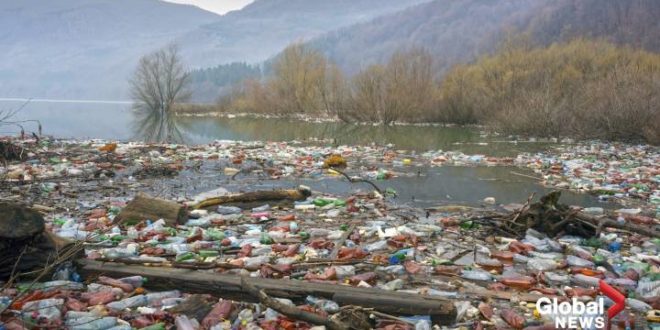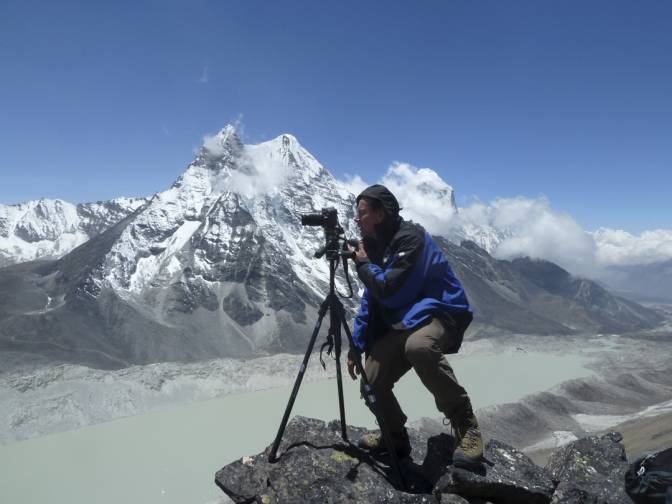Tourism is big business, and a lot more people are travelling now than in previous decades.
According to the United Nations World Tourism Organization, there are about 1.4 billion international tourist arrivals a year. In 1950, that number was only 25 million.
Tourism brings many benefits to a city, including more money and jobs. It can also help cities preserve their local traditions and monuments.
But along with these benefits, tourists are also bringing something else to these cities — trash.
READ MORE: Famous Thai beach from Leonardo DiCaprio movie closes again due to over-tourism
“No matter where you go, no matter what remote area, they all have two of the same problems: what do you do with human waste, what do you do with solid waste?” explains Alton Byers, senior research associate with the University of Colorado, at the Institute of Arctic and Alpine Research.
Byers has been visiting Mount Everest every year for the last 40 years and is working to develop waste-management strategies in the villages near the mountain.
jQuery(“.story-ad-read-more a”).click(function() { jQuery(“html, body”).animate({ scrollTop: jQuery(“#div-gpt-gnca-ads-6872-300250-2”).offset().top + jQuery(“#div-gpt-gnca-ads-6872-300250-2”).height() }, “fast”); return false; });
According to the United Nations Environment Program, tourists end up producing 4.8 million tonnes of trash per year, 14 per cent of which is solid waste.
And it’s the big sites that have the biggest problems: Mount Everest, Machu Picchu and Stonehenge are all struggling with an increasing amount of trash left behind.
READ MORE: 8,000 kilograms of human poop estimated left on Mount Everest this year
Global News spoke with Yannick Beaudoin, director general of Ontario and Northern Canada with the David Suzuki Foundation.
“I think you have to think about it as you’re going into someone else’s home. What would you do in your own home, and would you do the same thing in someone else’s home?” explains Beaudoin.
In 2018, the island of Boracay in the Philippines was closed to the public for about six months while it underwent environmental rehabilitation. The Chinese government closed a Mount Everest base camp located in Tibet to tourists last December, permitting only individuals with climbing permits and those conducting research to visit the site. These are just some of the destinations that have had to shut their doors to tourists temporarily to take care of a pileup of trash.
READ MORE: Plastic pollution crisis — How waste ends up in our oceans
But why is the amount of trash growing?
“Tourism is now super accessible. Even 10, 20, 30 years ago, it was not necessarily that easy or affordable to just hop on a plane and go somewhere,” says Beaudoin.
“Now, suddenly, everyone can, and so I think in addition to that, when you have a bit more of that disposable society approach where it’s just as easy to get a water bottle and just toss it on the side when you’re done, we’re not only being mindful of that when we’re, again, in someone else’s home.”
READ MORE: Antarctica keeps attracting visitors — and it may be ‘last-chance tourism’
So, what can be done about the trash that continues to pile up at tourist sites around the world?
“Tourists need to have their awareness increase, and they need to do their part,” says Byers. “Lodges need to see this. I think they know that this is unsustainable. What’s going on, the practice, is not sustainable. They need to start developing recycling technologies if they’re, realistically, going to address the problem so everybody is a player in this.”
Many restaurants and hotels at tourist landmarks have started stepping up to help with this issue.
“We work a lot at the foundation on circular economy approaches, and part of that is how do you not just transform the consumption side but also the production side? Do we need to have the plastic straws and the plastic cups and disposable everything in our tourist areas, in our hotels?” Beaudoin explains.
Byers and Beaudoin both believe in a similar solution for tackling the growing pile of trash at tourist sites around the world: be more mindful, raise awareness of the issue among tourists, tour companies and accommodation providers and eliminate trash together as a global community.
[ad_2]You can read more of the news on source
 Travelsmart
Travelsmart





